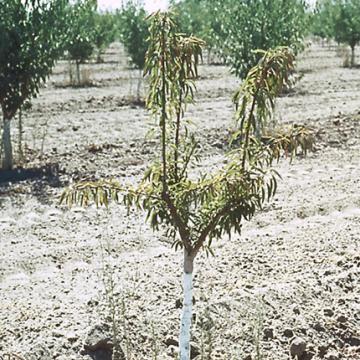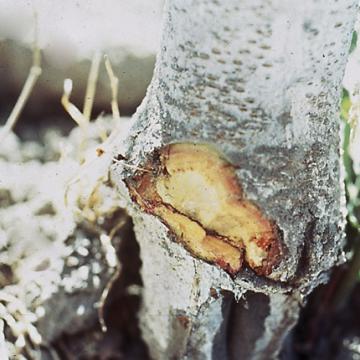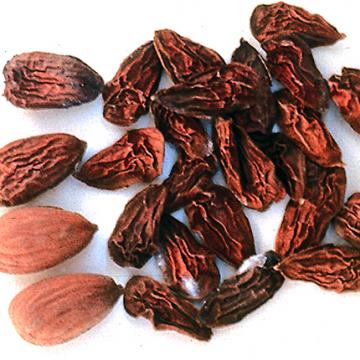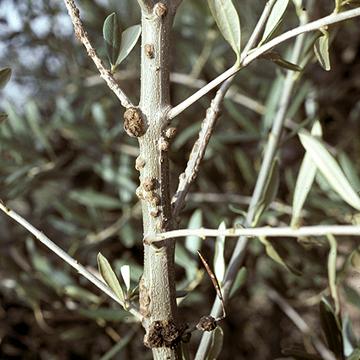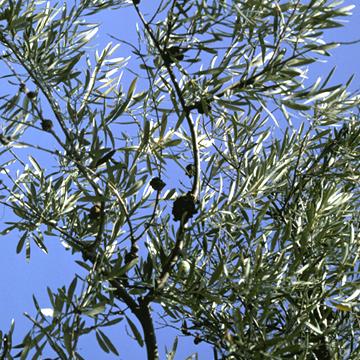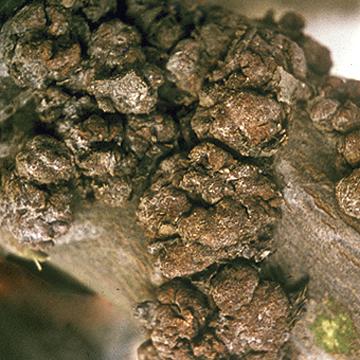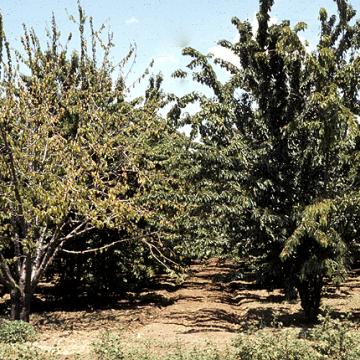DISEASE: Brown line and decline
HOST: Almond
Stunted and yellowish diseased tree. Such trees produce little to no growth and decline rapidly.
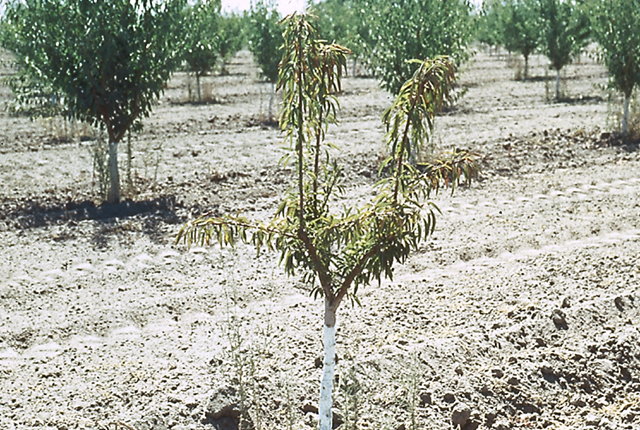
Brown line and decline | Almond
DISEASE: Brown line and decline
HOST: Almond (Prunus dulcis)
PATHOGEN: 'Candidatus Phytoplasma' sp.
PATHOGEN SYNONYM: Phytoplasma (undefined)
SOURCE: B. Teviotdale
DISEASE: Brown line and decline
HOST: Almond
Bark was split laterally at graft union, revealing line of necrotic tissue that extends into woody cortical tissues.
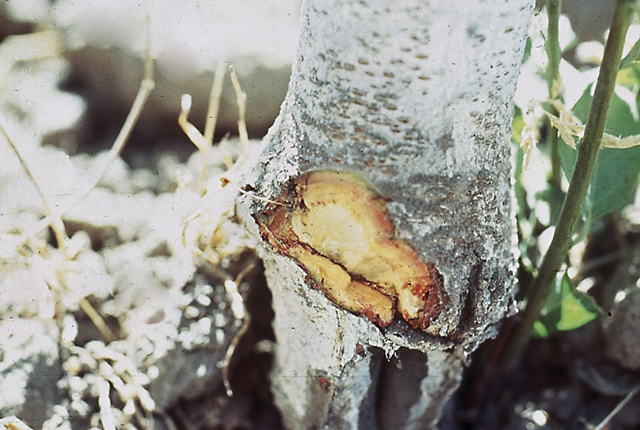
Brown line and decline | Almond
DISEASE: Brown line and decline
HOST: Almond (Prunus dulcis)
PATHOGEN: 'Candidatus Phytoplasma' sp.
PATHOGEN SYNONYM: Phytoplasma (undefined)
SOURCE: J. Uyemoto
DISEASE: Brown line and decline
HOST: Almond
Shriveled nuts from infected tree. Two healthy kernels (bottom left).

Brown line and decline | Almond
DISEASE: Brown line and decline
HOST: Almond (Prunus dulcis)
PATHOGEN: 'Candidatus Phytoplasma' sp.
PATHOGEN SYNONYM: Phytoplasma (undefined)
SOURCE: J. Uyemoto
DISEASE: Olive knot
HOST: Olive
Multiple infections of young stems. The bacterium invades vascular tissues during certain times of the year and may be isolated from branches that appear healthy.
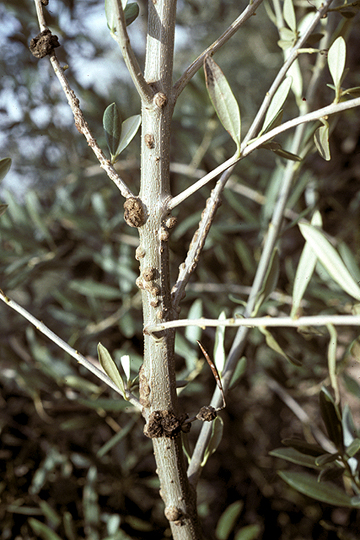
Olive knot | Olive
DISEASE: Olive knot
HOST: Olive (Olea europaea)
PATHOGEN: Pseudomonas savastanoi pv. savastanoi
SOURCE: M. Schroth
DISEASE: Olive knot
HOST: Olive
Tree with knots/galls on branches along with twig dieback, which is associated with knots. Fusarium and Diplodia spp. infect through knots and are thought to be main reason for dieback.
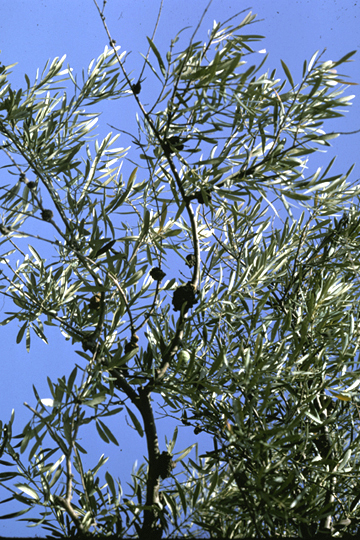
Olive knot | Olive
DISEASE: Olive knot
HOST: Olive (Olea europaea)
PATHOGEN: Pseudomonas savastanoi pv. savastanoi
SOURCE: M. Schroth
DISEASE: Olive knot
HOST: Olive
Multiple infections on olive branch. Knots at this stage begin to die from the outside in and are infected by several fungi.

Olive knot | Olive
DISEASE: Olive knot
HOST: Olive (Olea europaea)
PATHOGEN: Pseudomonas savastanoi pv. savastanoi
SOURCE: M. Schroth
DISEASE: X-disease (Western X) or buckskin
HOST: Cherry
Comparison of normal, dark cherries (in hand) with infected, immature cherries with less pigmentation.
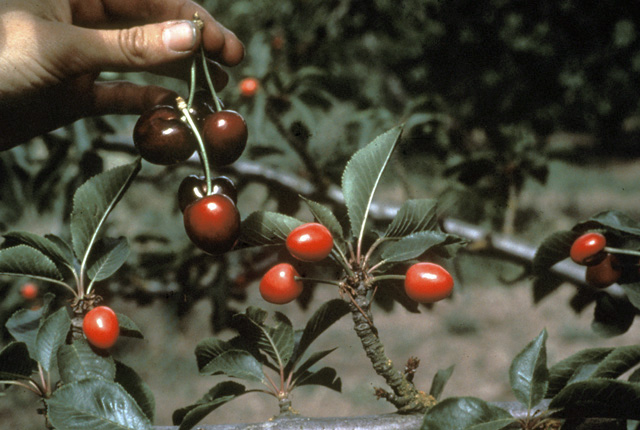
X-disease (Western X) or buckskin | Cherry
DISEASE: X-disease (Western X) or buckskin
HOST: Cherry (Prunus avium)
PATHOGEN: 'Candidatus Phytoplasma pruni'
PATHOGEN SYNONYM: Phytoplasma X-disease group
SOURCE: A. Purcell, M. Davis
DISEASE: X-disease (Western X) or buckskin
HOST: Cherry
Healthy cherry shoot (left) and stunted shoot (right).
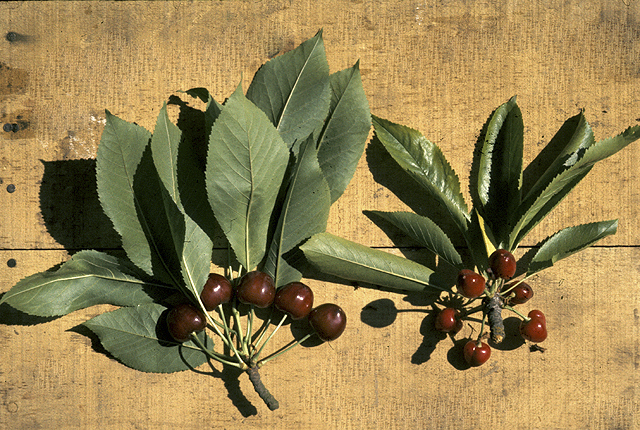
X-disease (Western X) or buckskin | Cherry
DISEASE: X-disease (Western X) or buckskin
HOST: Cherry (Prunus avium)
PATHOGEN: 'Candidatus Phytoplasma pruni'
PATHOGEN SYNONYM: Phytoplasma X-disease group
SOURCE: S. Thomson
DISEASE: X-disease (Western X) or buckskin
HOST: Cherry
Infected trees on 'Mazzard' rootstock (right) may live for years, producing fruit with symptoms. Trees on 'Mahaleb' rootstock (left) usually die rapidly in year of infection, about time of fruit ripening.
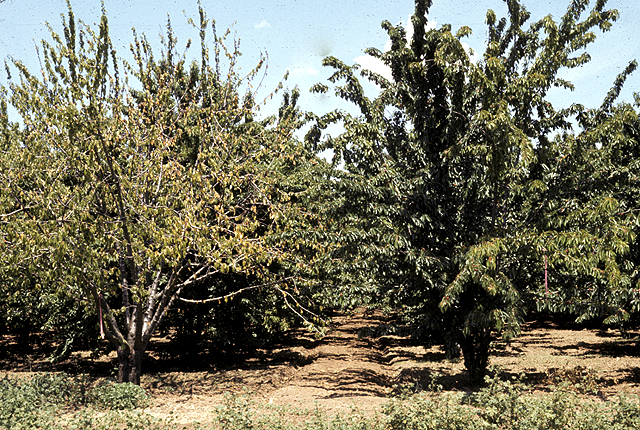
X-disease (Western X) or buckskin | Cherry
DISEASE: X-disease (Western X) or buckskin
HOST: Cherry (Prunus avium)
PATHOGEN: 'Candidatus Phytoplasma pruni'
PATHOGEN SYNONYM: Phytoplasma X-disease group
SOURCE: S. Thomson


